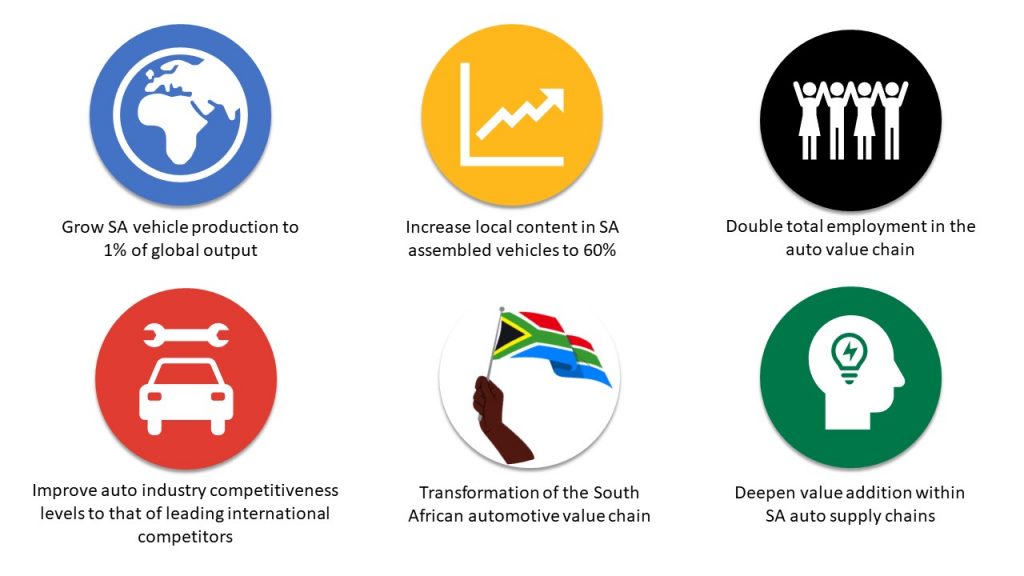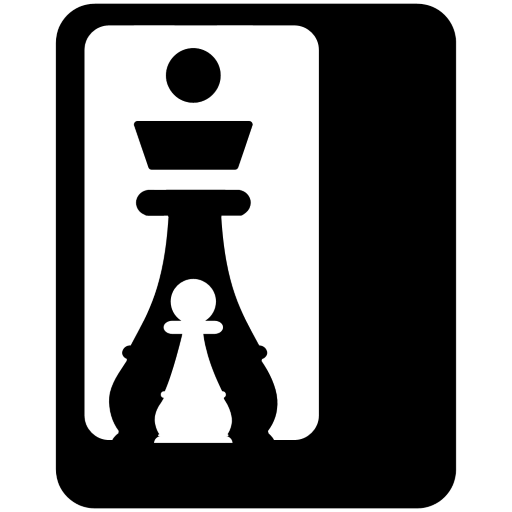So, what is SAAM ’35?
South Africa’s automotive industry is ranked 3rd among our economic sectors, after mining and financial services. Globally, we are ranked about 18th in terms of production of motorized vehicles. As such, it should come as no surprise that, in 2018, Minister (of Trade & Industry at the time) Rob Davies announced SAAM, a masterplan to leverage the automotive industry to increase productivity and create prosperity in South Africa.
In short, the SAAM, or South African Automotive Masterplan, aims to:
- Transform the SA automotive industry into one that is globally competitive
- Increase the industry’s contribution to the sustainable development of our productive economy
- Creating prosperity for industry stakeholders and broader society alike
Some goals that have been set to achieve these visions:

Plans to achieve the above goals have been separated into “6 pillars”, namely:
- Local market optimization
This entails the growth of South Africa’s domestic market (by approximately 91%), as well as reduced import of vehicles for the domestic market.
- Regional market development
Beyond increasing our local market, SAAM aims to increase market share in SADC, SACU and SSA, which is made possible given the areas’ fast-growing middle-class.
- Localisation
This pillar aims to ensure that most auto parts and their raw materials be locally sourced and manufactured. This pillar isn’t limited to physical parts, but also aims to ensure that the technology and people used in the value chain are also locally sourced as far as possible.
- Automotive infrastructure development
This targets the production infrastructure (e.g.: Industrial parks and supplier parks) required to ensure efficient and internationally competitive production. This also includes the development of alternative technologies to target SA’s low fuel quality and the integration of EV technology into our automotive industry.
- Industry transformation
This pillar focuses on aligning BEE principles in industry and employing more people of colour in all levels of the value chain – artisans, management, executives. This pillar also aims to ensure that suppliers across the value chain is comprised of majority black-owned companies.
- Technology and associated skills development
To achieve the goal of global competitiveness, we need to enhance efficiency of production processes across the value chain. This can be achieved through the development of new technologies for streamline production processes and their visibility. This pillar also includes the development of a sustainability roadmap and he introduction of EV technologies into our industry.
So where does Checkmate come in?
Localisation
When any plant in the SA automotive Industry chooses Checkmate, they choose a local South African company that was borne out of the need to provide industry-specific consulting solutions and purpose-built software, built by Engineers and Developers that understand the unique needs of the industry.
Technology and associated skills
It is essential that SA’s automotive industry remains on par with international standards by making use of technology to manage and improve business processes and output quality.
Checkmate’s software and consulting solutions is specifically for this purpose, with user-friendly interfaces for users of all technological skill levels.
Sources:


Recent Comments